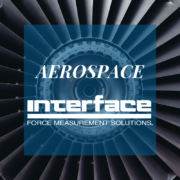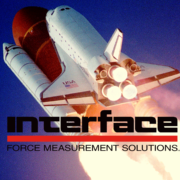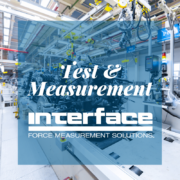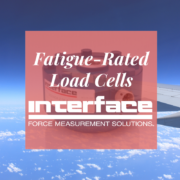Taking Flight with Interface Solutions for Aircraft Testing
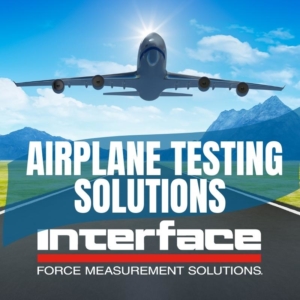 As a top supplier of premium force measurement solutions for the aerospace industry, one of our critical areas requiring precision accuracy and high-quality products is for testing airplanes. Interface load cells, torque transducers, and instrumentation are used regularly in testing of all types of aerospace apparatus, components, and machines, along with embedding our force sensors in aircraft for ongoing simulation tests and inflight data acquisition.
As a top supplier of premium force measurement solutions for the aerospace industry, one of our critical areas requiring precision accuracy and high-quality products is for testing airplanes. Interface load cells, torque transducers, and instrumentation are used regularly in testing of all types of aerospace apparatus, components, and machines, along with embedding our force sensors in aircraft for ongoing simulation tests and inflight data acquisition.
Aircraft, spacecraft, military, and defense companies such as Boeing, Airbus, Lockheed, Northrop Grumman, Bombardier, Embraer, Gulfstream, NASA, and Cessna and many others in the supply and production lines utilize Interface load cells for thrust, wing, static, and fatigue testing. While structural test applications use many types of LowProfile™ load cells, Interface also offers a wide variety of load washers, load buttons and miniature tension and compression load cells for test, production, and control monitoring applications for aircraft.
Why do aircraft testing professionals prefer Interface solutions? One reason is our moment and temperature compensated load cells use proprietary alloy strain gages for extreme accuracy and reliability that is unmatched by other brands. Using eight proprietary strain gages per sensor, our 4mV/V output well exceeds the performance requirements for testing these specialized aerospace vehicles.
In addition, before the airplanes are even assembled, every manufactured part and components must go through rigorous testing. There are hundreds of machines that are used on the production line for the hundreds of thousands of components needed to complete these specialized craft. Interface load cells and torque transducers are found on many of these production and test machines. Our products are used to provide a wealth of insight to guide manufacturers through research, development and final build. Because testing is so inherent for any of these parts, Interface products provide reliability and accuracy when there are no exceptions.
We recently developed several new application notes on ways our products are used to test airplanes. Included below is a preview of a few of the latest additions to our application notes catalog.
Jet Engine Thrust Test
A customer wanted to conduct a static jet engine thrust test that can accurately determine the engine’s thrust, burn time, chamber pressure, and other parameters, providing invaluable data to propellant chemists and engineers. They needed a high accuracy load cell with excellent repeatability to withstand thrust forces in very harsh environments. Interface offered a 1000 High Capacity Fatigue-Rated LowProfile™ Load Cell, which is ideally suited based on their performance for this application. The load cell reacts to the thrust forces produced by the jet engine and the signals are collected and recorded to create a “thrust curve” of the engine. The performance of an Interface LowProfile™ Load Cell allowed the engineers to be confident in the data acquired from the static testing. Additionally, the repeatability of the load cell results in reduced time between tests, making static jet engine thrust testing more efficient. Read the new Jet Engine Thrust Test application note here.
Aircraft Yoke Torque Measurement
An aircraft manufacturer wanted to measure the torque of their aircrafts yoke or control wheel. They also wanted to monitor the torque and forces applied to ensure that the aircrafts controls are operating properly. Interface suggested using the AT103 2-Axis Axial Torsion Load Cell to measure both torque and force within this single sensor. It can be installed inside of the yoke, and can measure the rotation of the yoke, and the forward and backwards movements. Data can be measured and paired with the SI-USB4 4-Channel USB Interface Module and displayed with the customer’s laptop. Using this solution, the customer was able to measure and monitor the torque and force of the yoke control. Read the Aircraft Yoke Torque Measurement application note.
Aircraft Engine Hoist
An aerospace company wanted to test their aircraft engine hoist in order to safely lift, remove, or install engines efficiently and safety. Interface’s solution was to install WTSSHKB-HL Wireless Bow Shackles to the aircraft engine hoist. A heavy load was added to the hooks where the aircraft engine would be. Results from the heavy load are then sent wirelessly to both the WTS-BS-4 USB Industrial Base Station attached to the customers computer or laptop, and the WTS-1-HS Handheld display for single transmitters. With these products, the customer was assured that the aircraft engine hoist was strong and secure enough to lift a heavy engine when installing or removing an engine inside of an aircraft. Learn more about the Aircraft Engine Hoist application here.
Our expert application engineers help our customers by providing technologies that provide exceedingly accurate measurement used in all types of testing, including structural, static and fatigue. For more information on Interface and its solutions designed for airplanes and other aerospace applications, please visit https://www.interfaceforce.com/solutions/aerospace.
Additional Aircraft Testing Resources
Aircraft Wing Fatigue App Note
Aircraft Screwdriver Fastening Control App Note
Aircraft Lifting Equipment App Note
Examining Interface Aerospace Industry Solutions
